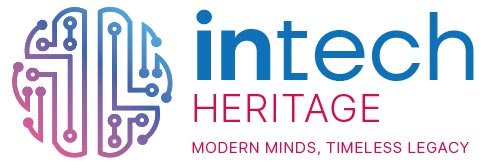In the world of software development, pair programming has been a popular approach for years. This technique, where two developers collaborate on the same task, has proven effective in improving code quality, reducing errors, and speeding up learning. However, the evolution of artificial intelligence (AI) has brought about a radical shift in this methodology. Nowadays, pair programming with AI should be the new standard, and companies that fail to adopt it risk falling behind.
The Strategic Value of Pair Programming with AI
Software development is faster and more complex than ever, and AI plays a crucial role in this context. AI tools, such as code assistants and generative AI engines, are transforming the way developers work. It’s no longer just two humans collaborating; now, it’s a programmer working alongside an AI that suggests solutions, corrects errors in real-time, and optimizes code as it’s written.
This collaboration between developers and AI brings significant benefits:
- Faster development: AI can generate solutions and suggestions in seconds, something that might take a developer minutes or even hours.
- Error reduction: Tools like GitHub Copilot, Claude Sonnet, or ChatGPT can detect potential errors and fix them before they turn into major problems.
- Continuous learning: Developers can learn and improve their skills while working with AI, which suggests new techniques or approaches.
Why AI Should Be Mandatory in Development Environments
The productivity and efficiency that AI offers cannot be ignored. For this reason, companies should make the integration of AI tools into developers’ workflows mandatory. Instead of being seen as an additional option or a “nice-to-have,” AI-based solutions should become an essential part of the modern development environment.
AI not only automates repetitive tasks but also frees developers to focus on more strategic areas, such as system architecture or creating innovative new features. Additionally, it reduces developers’ mental load by handling tedious tasks like error correction or writing repetitive code that’s often necessary in many projects.
The Future of Development Focuses Less on Programming Languages
For a long time, being a developer meant mastering multiple programming languages deeply. However, AI is starting to make this intensive specialization unnecessary. What matters today is not knowing every detail of a language but deeply understanding the problems being solved and the purpose of the software being developed.
AI can translate an idea or a functional requirement into code across multiple languages, without the developer needing to be an expert in all of them. This democratizes software development, allowing more people, even those without years of experience, to effectively contribute to the creation of technological solutions. This changes the way software projects are approached: creativity and understanding of the problem take precedence over specific technical knowledge.
AI Bridges the Gap of Specialization
Tools like Copilot, Claude, or ChatGPT can already write code in various languages, suggesting optimal solutions or helping solve problems without the need for exhaustive knowledge. As a result, companies should no longer require all their developers to be experts in every programming language they use. Instead, they should foster an environment where the ability to ask the right questions and structure solutions is more important than manually coding.
This doesn’t mean that knowledge of programming languages is irrelevant, but it’s no longer as high a barrier as it once was. What AI has shown is that the key lies in understanding what needs to be achieved, not in how to write it in a specific language. AI can take care of that part.
It’s Crucial for Companies to Accelerate AI Adoption
To remain competitive, tech companies must take urgent steps to ensure their developers have access to the necessary AI tools. Failing to adopt this technology is a risky decision that could result in a loss of productivity and competitiveness compared to companies that do.
Moreover, by integrating AI, companies can reduce operational costs and accelerate project delivery times, as AI optimizes the software development lifecycle. Organizations should also consider implementing training programs on AI tools to maximize the benefits of this technology.
Pair Programming Between Humans Is a Thing of the Past
In the past, pair programming was an excellent way to share knowledge, detect errors, and speed up learning within a team. But today, with AI tools, this human-to-human practice is becoming obsolete. AI can take on the role of the second programmer more efficiently, suggesting real-time corrections, optimizing code performance, and offering solutions based on vast databases of knowledge and prior experience.
A New Era of Development Has Begun
Pair programming with AI is no longer optional; it’s a necessity that companies must implement to maximize productivity and quality in their software projects. The requirement to be an expert in multiple programming languages is quickly diminishing, thanks to AI’s ability to fill this gap. What’s important is that developers and companies understand what’s needed and how to structure solutions, letting AI handle the coding details.
Adopting this approach will not only improve the quality and speed of software development but will also allow developers to focus on what truly matters: solving real-world problems. Companies must accelerate their adoption of AI and ensure that all their developers have these tools in their daily work—or risk being left behind.

